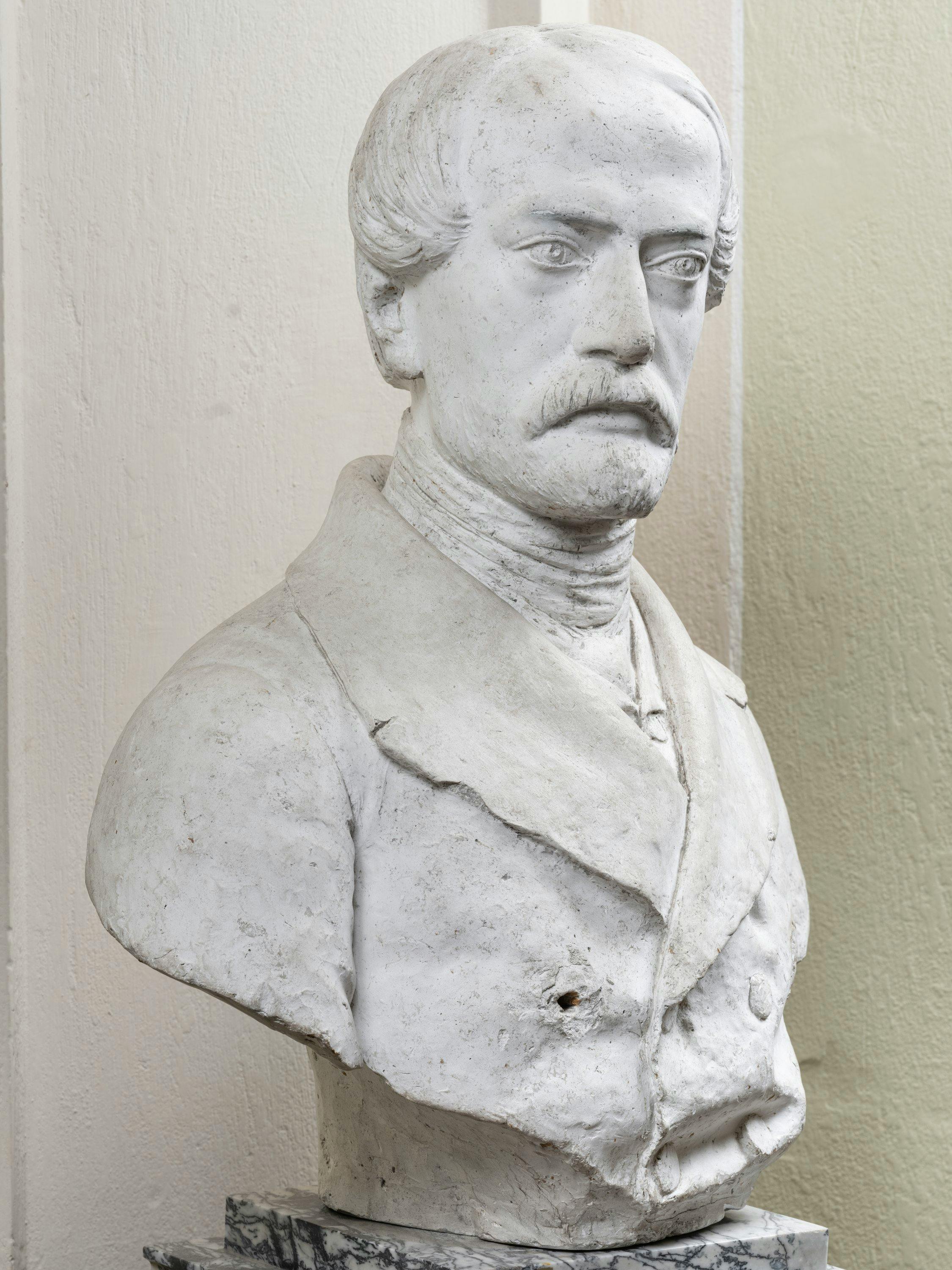Giuseppe Mazzini’s Bust
Adriano Cecioni (Fontebuona, Florence 1836 - 1886 Florence)
Giuseppe Mazzini, the main theorist of the Risorgimento that led Italy to unity and independence, had shown appreciation for modern art in his essay “Modern Italian Painting” (1841), which, by the power of synthesis, overcame the description and sentimental and rhetorical emphasis of Romantic painting.
Adriano Cecioni was certainly one of the main proponents of the anti-academic revolution brought about by the artists who recognised themselves under the Macchiaioli label in Florence in the 1860s, and participated in the renewal of artistic language in sculpture and painting, but also through theoretical writings and salacious caricatures. The language adopted by Cecioni in both sculpture and painting constructs forms by simplified planes, avoiding superfluous details. In this post-mortem portrait of Mazzini, conducted by Cecioni on the basis of a photograph taken a couple of decades earlier, the great republican’s expression seems to look firmly into the distant future. The Macchiaioli artists had been inflamed by the Risorgimento cause, some of them fighting as volunteers or going to paint at the front, eventually hoping for a united and republican Italy: the independence achieved under the Savoy monarchy for many of them was a reason for deep disappointment and for turning away from political commitment.
The bust was purchased by Nello Tarchiani, the first director of the Gallery of Modern Art in Florence, in 1926 from Cecioni’s daughter, Giulia.
A. Mazzanti, L’Unità d’Italia, Firenze 2011, p. 41
